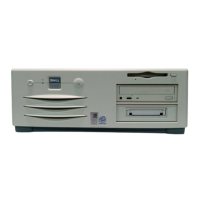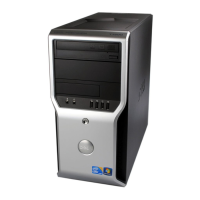Solving Problems 205
Microprocessor Problems
CAUTION: Before you begin any of the procedures in this section, follow the
safety instructions in the
System Information Guide
.
Fill out the Diagnostics Checklist as you complete these checks.
IF YOU RECEIVE AN INSUFFICIENT MEMORY MESSAGE —
1 Save and close any open files and exit any open programs you are not using to
see if that resolves the problem.
2 Confirm that the computer has sufficient memory to run your programs. See
the software documentation for minimum memory requirements. If necessary,
install additional memory.
3 Reseat the memory modules to ensure that your computer is successfully
communicating with the memory.
4 Restart the computer.
5 Run the Dell Diagnostics. If any of the diagnostics tests fail, see "Contacting
Dell".
IF YOU EXPERIENCE OTHER MEMORY PROBLEMS —
1 Reseat the memory modules to ensure that your computer is successfully
communicating with the memory.
2 Restart the computer.
3 If the problem still exists, remove all the memory modules and install one
memory module in memory module connector 4.
4 Restart the computer.
The following message appears: Alert! Operating in Debug Mode.
Please Populate Memory in Pairs for Normal Operation.
5 Press <F1> to boot to the operating system.
6 Run the Dell Diagnostics.
7 If the memory module passes, shut down the computer, remove the memory
module, and repeat the process with the remaining memory modules until a
memory error occurs during start-up or diagnostic testing.
If the first memory module tested is defective, repeat the process with the
remaining modules to ensure that the remaining modules are not defective.
8 When the defective memory module is identified, see "Contacting Dell" for a
replacement.
NOTE: If necessary, the computer can operate in debug mode until new memory
modules are installed.

